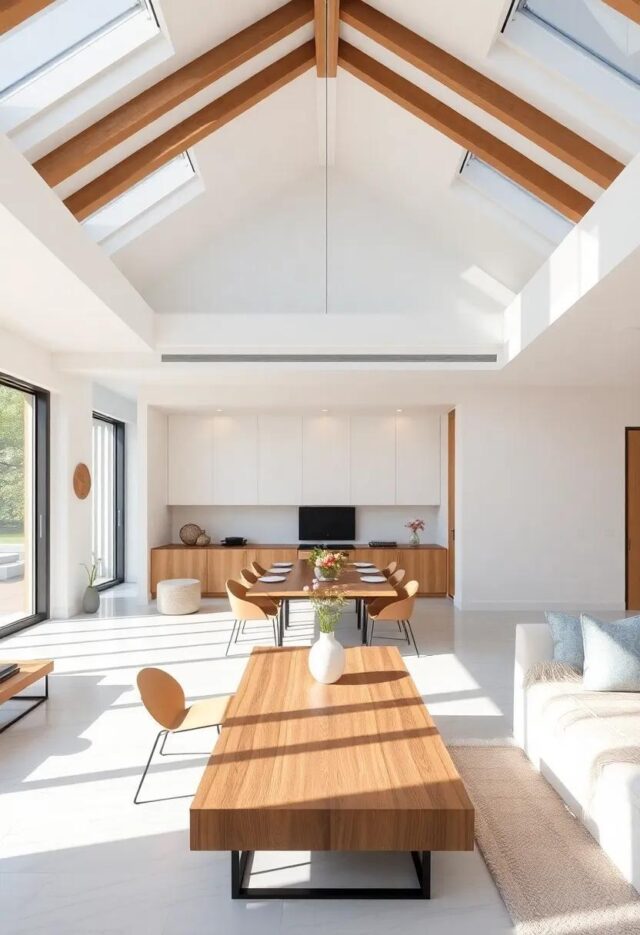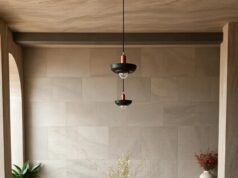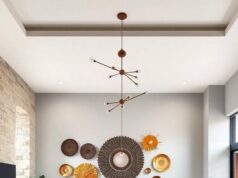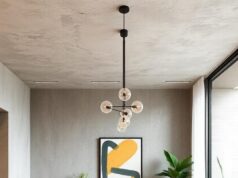In an age where the walls between functionality and aesthetics are increasingly blurred, the allure of open-concept living spaces has captured the imagination of homeowners and designers alike. Welcome to the world of seamless spaces, where dining and living room designs harmoniously blend to create environments that are as inviting as they are practical. Gone are the days of compartmentalized rooms that restrict movement and stifle creativity; today’s design ethos embraces a fluidity that encourages interaction and connection. In this exploration of open-concept designs, we will uncover the charm of these versatile spaces, examining how they foster social engagement, enhance natural light, and create a sense of unity within the home.Join us as we delve into the principles, benefits, and aesthetic possibilities that make open-concept living the preferred choice for modern dwellers—where every meal shared, every conversation sparked, and every moment enjoyed becomes an integral part of a beautifully intertwined living experience.
Dynamic Flow Between Dining and Living Areas Uniting Comfort and Style

In contemporary home design, the integration of dining and living spaces has emerged as a quintessential trend that champions both functionality and aesthetic appeal. The absence of physical barriers allows natural light to flow freely, enhancing the ambiance and creating an inviting atmosphere. With thoughtfully chosen furniture arrangements, these rooms can transform into multifunctional areas that cater to both relaxation and social gatherings. Accessories like soft throw pillows, elegant table settings, and striking wall art contribute to a cohesive design that elevates everyday living into an art form.
To achieve a harmonious blend of comfort and style, consider the following design elements:
- Color Palette: A unified color scheme can help define spaces while providing a sense of continuity.
- Lighting: Layered lighting options, such as pendant lights over the dining table and soft recessed lighting in the living area, enhance the overall ambiance.
- Flooring: Consistent flooring materials, like hardwood or polished concrete, create a seamless transition between the two areas.
- Furniture Selection: Choosing complementary furniture styles fosters a balanced aesthetic, whether it be minimalist, rustic, or modern chic.
| Element | impact |
|---|---|
| Color Palette | Enhances flow and mood |
| Lighting | Creates warmth and functionality |
| Flooring | Connects spaces visually |
| furniture | Defines multi-purpose zones |
Bringing Nature Indoors via Open Spaces and Greenery for a Fresh Ambiance
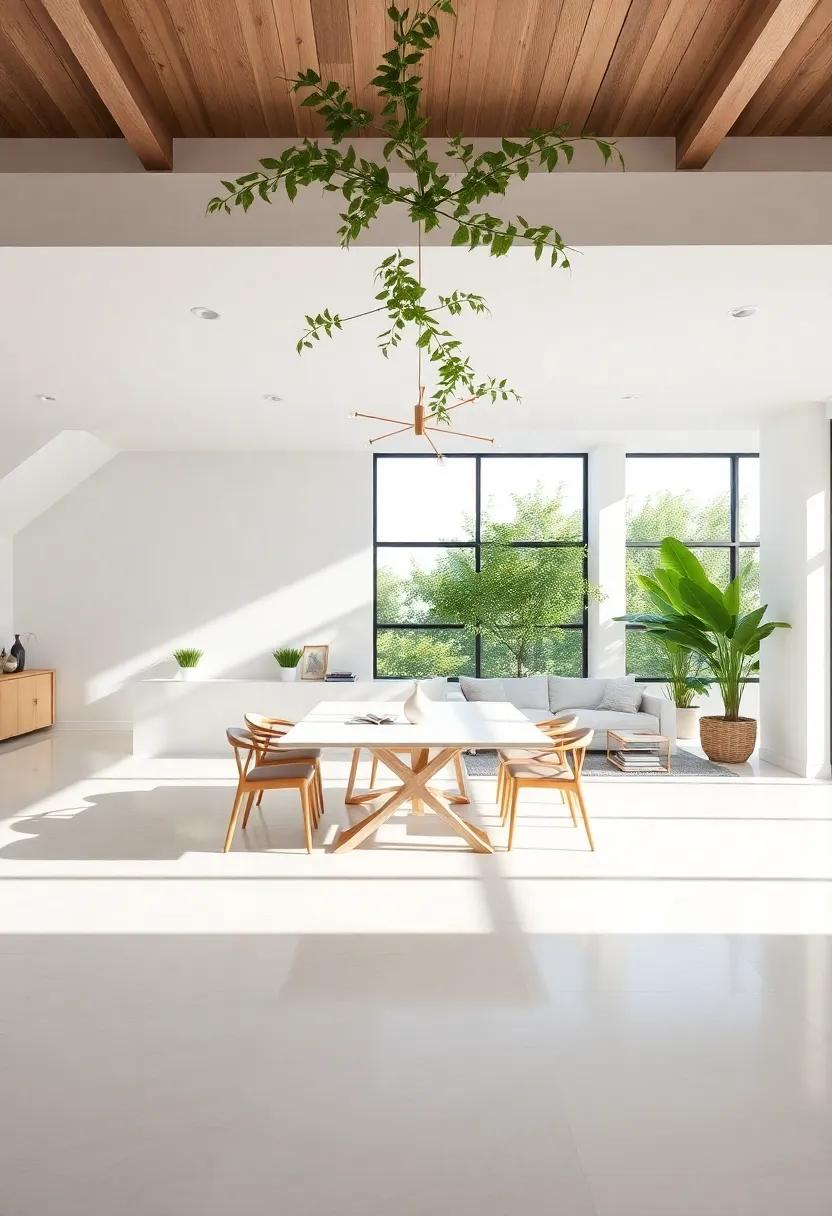
Incorporating greenery and natural elements within open-concept spaces effortlessly enhances the atmosphere of a home. Large windows that allow the sunlight to stream in can be paired with indoor plants to create a harmonious connection between the interior and exterior. From towering potted trees to hanging planters, the inclusion of various plants offers not only aesthetic appeal but also improves air quality. Consider the following options for a vibrant indoor oasis:
- fiddle Leaf Fig: A bold statement plant that thrives in radiant, indirect light.
- Snake Plant: A low-maintenance option that purifies the air effectively.
- Pothos: Versatile and adaptable, perfect for shelves or cascading down walls.
- Herb Garden: Fresh basil, mint, or rosemary adds fragrance and functionality to your kitchen area.
To elevate the aesthetics further, consider integrating natural materials and textures into your design scheme. Wooden accents, stone countertops, and woven textiles bring warmth and depth to open spaces, creating a balanced visual ensemble.A thoughtfully designed greenery layout can serve as a focal point while enhancing the overall vibe. Below is a simple table showcasing the benefits of common indoor plants for your consideration:
| Plant | Benefits |
|---|---|
| Fiddle Leaf Fig | Improves mood; adds height and drama. |
| Snake Plant | Requires minimal care; thrives in low light. |
| Pothos | Easy to propagate; effective air purifier. |
| Herbs | Cooking benefits; aromatic enhancement. |
Layered Textures and Colors Creating Warmth in Open-Concept Designs
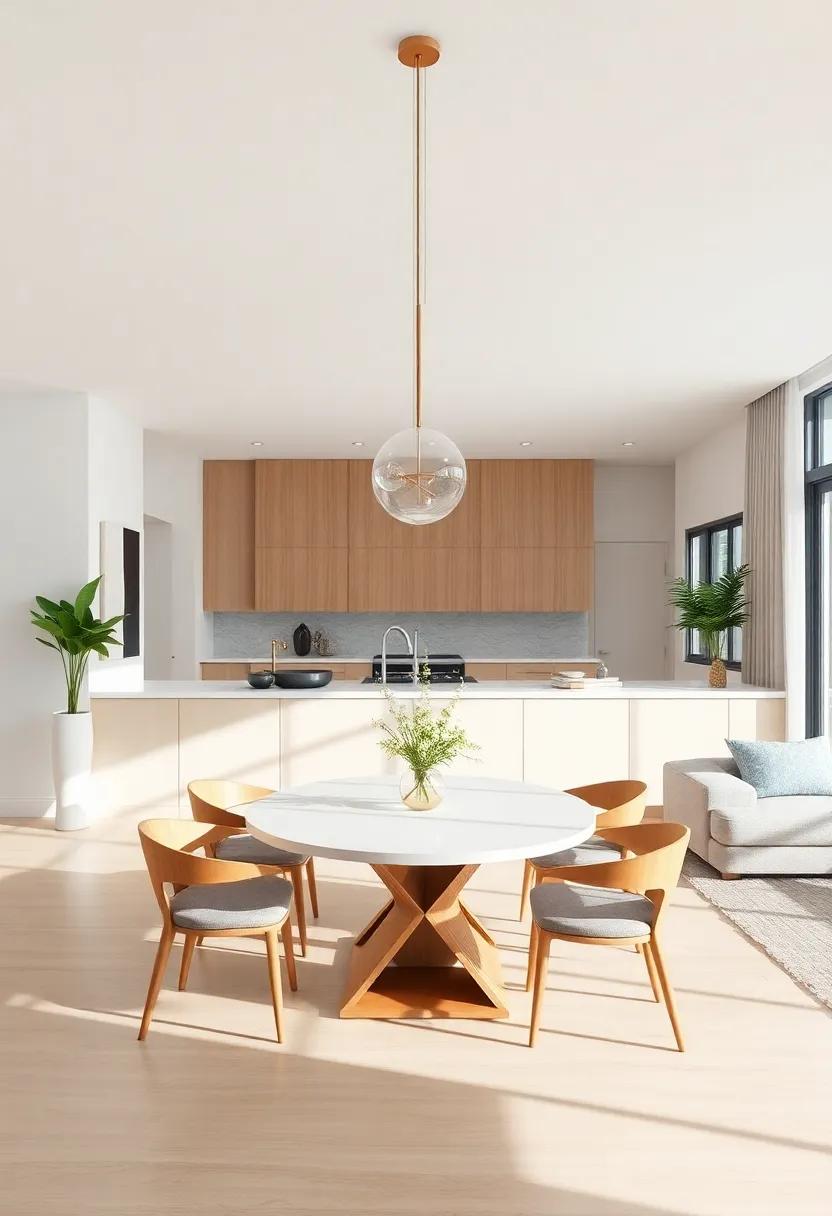
In the realm of open-concept designs, the interplay of layered textures and vibrant colors serves as a pivotal element in crafting a warm and inviting atmosphere. By incorporating various materials such as plush rugs, soft throw blankets, and textured wall coverings, homeowners can establish a sense of depth and coziness that draws people into the space. Rich, earthy tones paired with pops of bold color not only create visual interest but also evoke a feeling of warmth that transcends the boundaries between dining and living areas.
To achieve harmony within an expansive layout, consider the following elements in your design approach:
- Natural Materials: introduce wood, stone, and fabrics that resonate with the warmth of nature.
- Complementary Colors: Choose a cohesive palette that enhances the overall ambiance, using hues that create contrast yet flow seamlessly.
- Artistic Accents: Incorporate art pieces or decorative items that reflect personal style while reinforcing the layered textural concept.
An effective way to visualize this concept is through a curated style board or table showcasing color combinations and texture layers that resonate with your aesthetic:
| Color | Texture | Suggested Layering |
|---|---|---|
| Terracotta | soft Wool | Rug + Throw Pillow |
| Indigo | Woven Basket | Accent Decor |
| Mustard Yellow | Knitted Blanket | Couch Throw |
The Art of Lighting in Open Spaces Enhancing Mood and Functionality
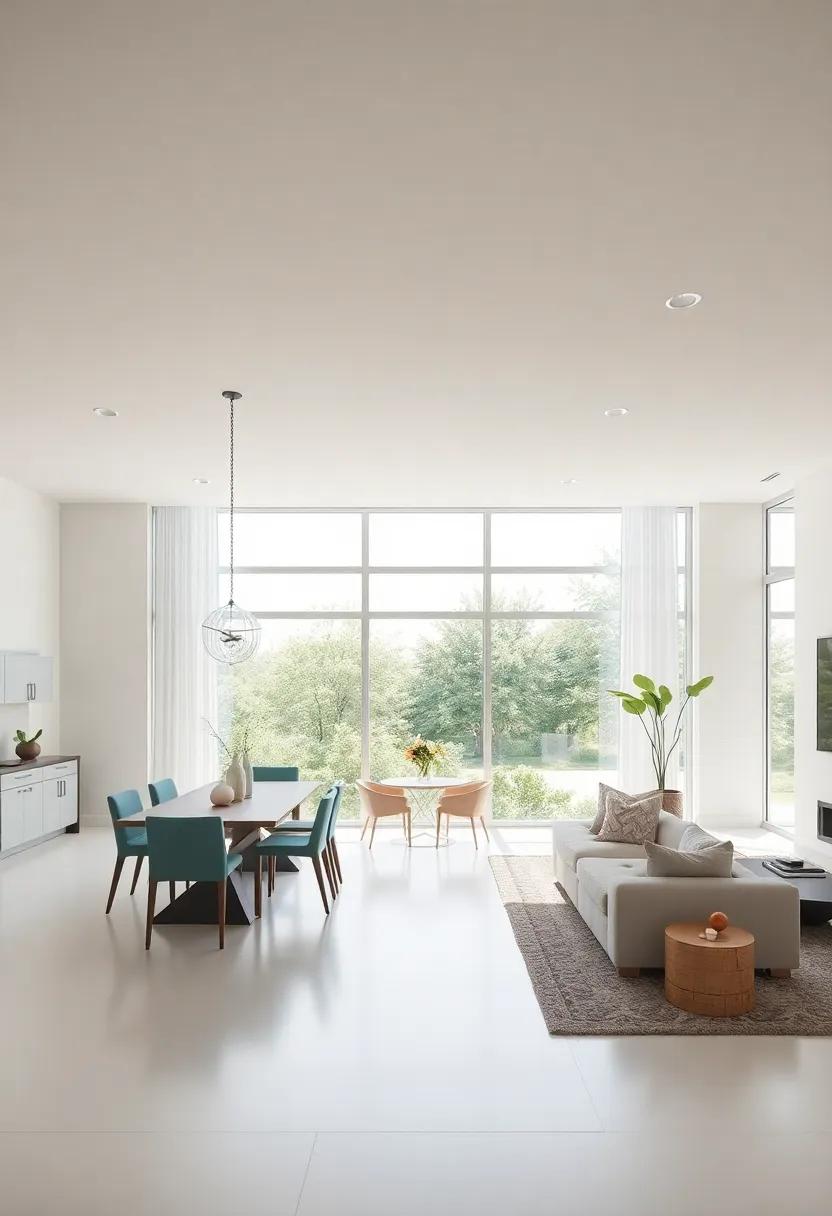
When designing an open-space area, the way you illuminate the environment can dramatically change its mood and functionality. Different lighting techniques can create a variety of ambiances, from cozy and intimate to bright and energizing. Consider incorporating a mix of overhead lighting, accent lights, and task lamps to achieve a balanced effect.Utilizing dimmers can also allow you to control the ambiance based on the time of day or the occasion, making the space versatile for both gatherings and everyday use.
Incorporating natural light is equally essential, as it not only enhances the aesthetic appeal but also positively impacts mood and well-being. Strategically placed mirrors can reflect light, making the area feel larger and more inviting. Here are some effective techniques to maximize both natural and artificial light:
- Layered lighting: Use a combination of ambient, task, and accent lighting.
- Light colors: Opt for light-colored walls and furnishings to reflect light.
- Plant Life: Introduce greenery that thrives in sunlight to brighten the space.
| Lighting Type | Purpose | Example |
|---|---|---|
| Overhead Lighting | Illuminates the entire space. | Chandeliers, Ceiling Fixtures |
| Accent Lighting | Highlights artwork or architectural features. | Wall sconces, spotlights |
| Task Lighting | Provides focused light for activities. | Desk lamps, Floor lamps |
Zoning Your Open Space with Furniture Arrangements for Versatile Living
To effectively delineate zones within an open space, thoughtful furniture arrangements can transform your living area into a multipurpose haven. Sofas, chairs, and coffee tables not only provide comfort but can serve as visual barriers that guide the eye and give each section its own identity. Consider the geometry of your layout; a U-shaped seating arrangement fosters intimacy and encourages conversation, while an L-shaped configuration can define a cozy nook for reading or relaxation. Incorporating elements like area rugs can also enhance this effect, creating a sense of separation without the need for walls.
Additionally, versatility can be found through the use of multifunctional furniture. Ottomans can serve as both footrests and extra seating, while nested tables offer flexibility for entertaining or everyday use. When planning your space, think about the flow of movement and accessibility; ensure there is enough room for easy navigation between areas. Below is a simple guide for furniture types that can elevate your open space while ensuring functionality remains at the forefront:
| Furniture Type | Functionality |
|---|---|
| sectional Sofa | Provides ample seating and defines a living area |
| Accent Chairs | Adds style and additional seating options |
| Dining Table with Extension | Flexible for everyday meals or entertaining guests |
| Storage Ottomans | Double duty as seating and storage solution |
Blending Kitchen and Living Spaces for Effortless Entertaining Opportunities
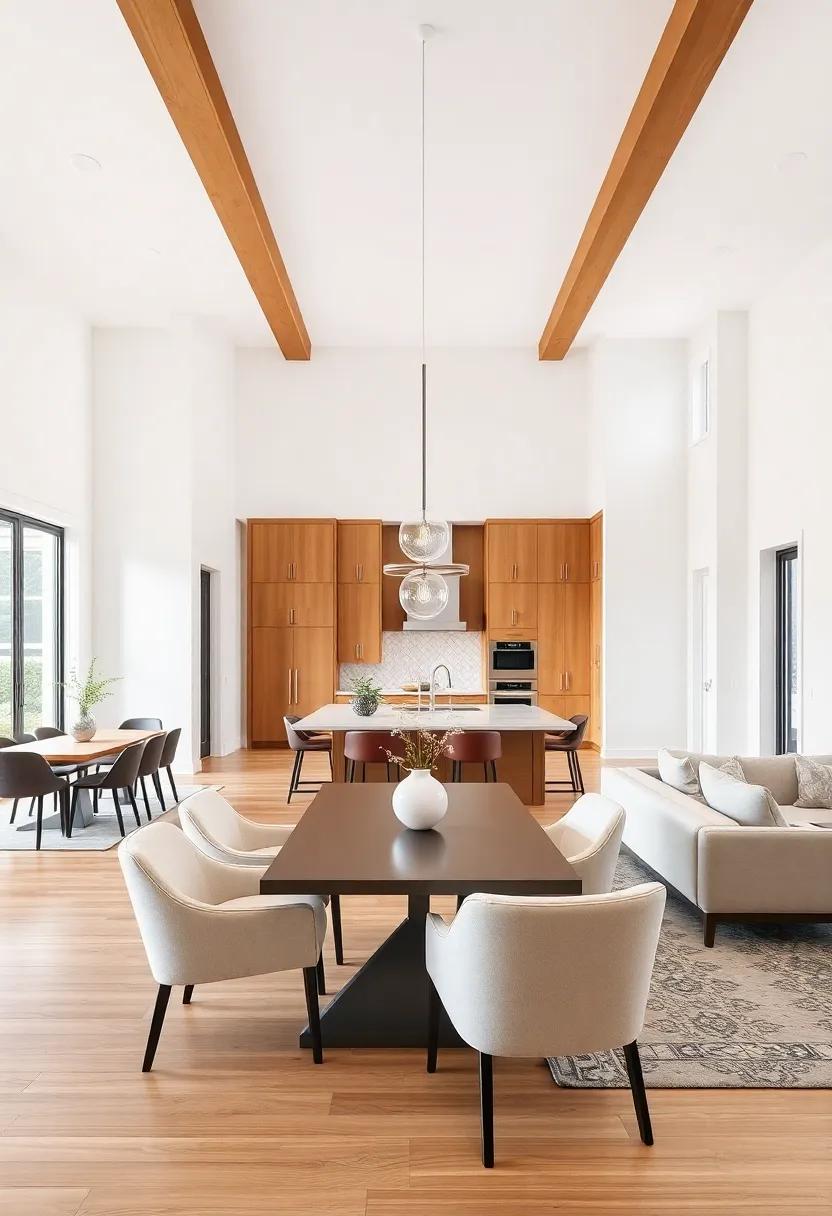
Creating a harmonious flow between kitchen and living spaces elevates both functionality and aesthetic appeal. Embracing open-concept designs allows for a seamless transition that encourages interaction among guests while cooking or entertaining. When designing these spaces, consider key elements that enhance connectivity:
- Color Palette: Choose complementary colors that unify both areas.
- material Usage: Utilize similar materials for flooring and countertops to promote continuity.
- Lighting: Implement layered lighting to create inviting atmospheres—think pendant lights over the kitchen island paired with ambient ceiling fixtures.
Moreover, multifunctional furniture plays a vital role in maximizing versatility within these blended spaces. Options like a kitchen island with seating or a coffee table that doubles as a storage unit facilitate easy transitions from meal prep to social gatherings. This adaptability can be visually enhanced with strategic layouts:
| Furniture Type | Purpose |
|---|---|
| Kitchen Island | Prep space & dining |
| Expandable Dining Table | Casual & formal seating |
| Ottoman | Extra seating & surface area |
Eclectic Decor Choices that Celebrate Individuality in Open Concept Homes
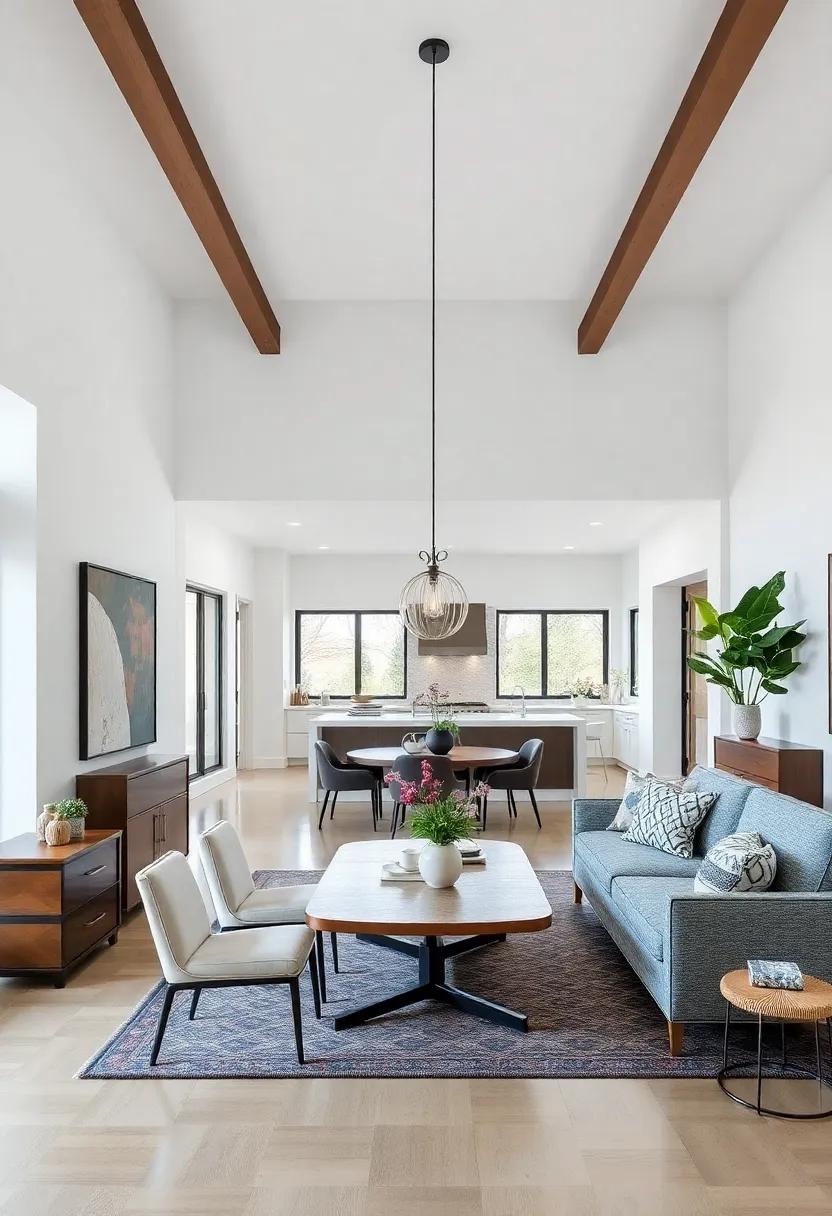
In an open-concept space, the challenge lies in harmonizing diverse elements while celebrating personal style. By embracing eclectic decor choices, homeowners can curate an inviting atmosphere that showcases individuality and charm. Layered textures, such as mixing rustic wood with sleek metals and plush fabrics, create visual interest and depth. To further enhance this vibe, consider integrating unexpected accents like:
- Vibrant Art Pieces: Bold paintings or sculptures add a splash of color and serve as conversation starters.
- Cultural Artifacts: Unique items from travels can reflect personal stories and enrich the space.
- Eclectic Furniture: A blend of vintage finds and modern designs encourages creativity in styling.
Moreover, utilizing furniture as a canvas for expression offers a chance to showcase interests and inspirations. Think of a chic dining table surrounded by mismatched chairs that echo different eras or styles, elegantly bridging transitions between living and dining areas. Incorporating patterns and colors, like:
| Pattern | Color Palette |
|---|---|
| Botanical Prints | Green, Beige, Earthy Tones |
| Geometric Designs | Blue, Gray, White |
| Abstract Motifs | Pink, Yellow, Black |
can create a cohesive flow that resonates throughout the space. Ultimately, choosing decor elements that speak to personal taste not only enhances the aesthetics of open-concept homes but also cultivates a warm, inviting environment where individuality shines.
Maximizing Natural Light in Open spaces for a Brighter Living experience
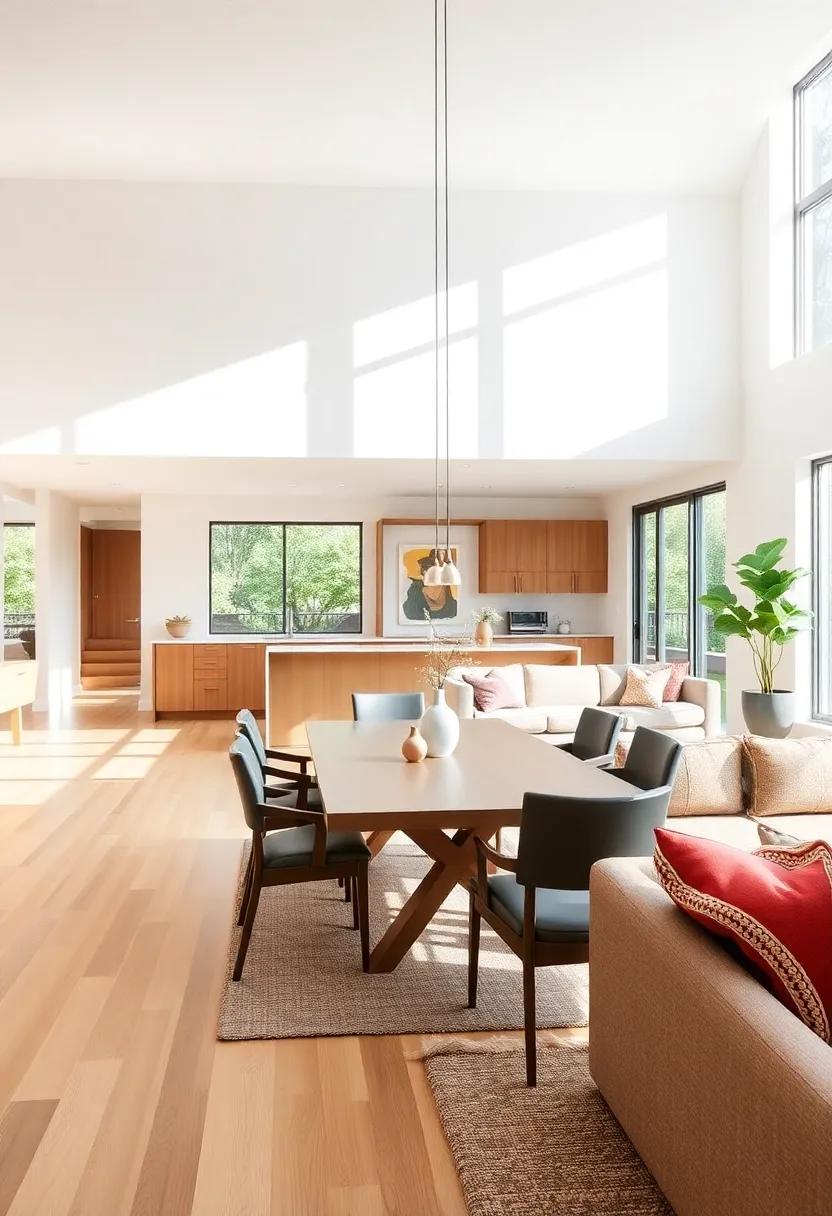
To create an ambiance that feels both warm and inviting, maximizing natural light is paramount in open spaces.Large windows and sliding glass doors can seamlessly connect indoor and outdoor settings, while strategic placement of mirrors can enhance the flow of daylight throughout the area. Consider the following elements to elevate the luminosity of your living spaces:
- Transom Windows: These decorative windows positioned above doors can introduce additional light into your living areas.
- Light-Colored Fabrics: Choosing light, airy drapery allows sunlight to filter in while maintaining privacy.
- Glass Partition Walls: Opting for glass wall sections can delineate spaces without obstructing light.
Moreover, the color palette of your open-concept design plays a crucial role in enhancing brightness. Soft whites, pastels, or light grays can reflect sunlight and amplify the feeling of space. Regular maintenance such as window cleaning should not be overlooked to ensure optimal light penetration. Here’s a quick comparison of color palettes and their effects on light reflection:
| Color | Effect on Light |
|---|---|
| White | Maximizes brightness and reflects light effectively. |
| Pastel Shades | Softly boosts light levels while adding subtle warmth. |
| Light Gray | Neutral tone that harmonizes with other colors and reflects natural light. |
Incorporating Personal Touches That Reflect Lifestyle in a Seamless Home
In the journey towards crafting an open-concept living space, personal touches are essential in creating a home that feels both cohesive and reflective of your lifestyle. Integrating elements that resonate with your individual story not only enhances the aesthetic appeal but also promotes a sense of warmth and familiarity. Consider incorporating a mix of textures and colors that mirror your experiences—like a handwoven throw from your travels or artwork that speaks to a cherished memory. Thoughtful details such as personal photos, family heirlooms, or curated collections can seamlessly blend into the décor, creating a narrative that invites exploration and connection.
To elevate your space without overwhelming it, aim for a balanced composition of functional and decorative items. This could include:
- Custom-built shelving to display books or art that inspire you
- An eclectic mix of furniture—think a vintage chair paired with modern pieces
- accent lighting that highlights your favorite features and creates ambiance
Using a mindful approach to selecting each item can awaken the senses and ensure a harmonious flow. Additionally, here’s a visual breakdown of how to layer personal touches effectively:
| Element | Style | Impact |
|---|---|---|
| Artwork | Local artist pieces | Fosters community connection |
| Textiles | Global patterns | Adds warmth and depth |
| Accessories | Gallery-style displays | Encourages conversation |
Creating Visual Balance with Color Schemes in Open-Concept Areas
To create harmony in an open-concept space, the strategic use of color schemes is essential. The right palette can visually link the dining and living areas, enhancing the flow and cohesiveness of the design. Consider employing a combination of complementary and analogous colors to set a mood that reflects your style while maintaining balance. Such as, a soothing combination of soft taupe with accents of teal can invite tranquility, whereas bold splashes of mustard yellow against a backdrop of deep charcoal can infuse energy into the environment. When planning your color strategy, think about:
- Accent Walls: Use a distinct color on one wall to create a focal point.
- Color Zones: Define spaces visually through variations of the same hue.
- inclusive Textiles: Incorporate colorful textiles that tie elements together.
Additionally, don’t underestimate the power of textures and patterns. Layering color with different materials can add depth and interest. For a breezy, cohesive look, consider the table below as a guideline for effective color combinations:
| Color Pair | Effect |
|---|---|
| Soft Grey and Dusty Rose | warm and Inviting |
| Deep Blue and Crisp White | Fresh and Timeless |
| Olive Green and Earthy Brown | Natural and Grounded |
Curating Multi-Functional Spaces to adapt to Everyday Needs

In today’s ever-evolving lifestyle, the demand for spaces that effortlessly bridge different functions is more pronounced then ever. Creating an environment that adapts to everyday needs means designing areas that serve multiple purposes without sacrificing style or comfort. When combining dining and living rooms, consider incorporating elements that enhance versatility.For example, use modular furniture that can be rearranged easily, and opt for multi-purpose designs like coffee tables that double as dining tables or daybeds that serve as both seating and sleeping areas.
Essential features to consider for a seamless transition between spaces include:
- Open Layouts: Incorporate wide pathways and minimal barriers to promote flow.
- Harmonious Color Schemes: Use a consistent palette to unify the areas visually.
- Layered Lighting: Combine ambient, task, and accent lighting to cater to various activities.
- Textural Variety: Introduce different materials (wood, textiles, metals) to promote dynamic visual interest.
To further illustrate the curation of these versatile spaces, consider the following layout options that maximize utility:
| Layout Style | Benefits |
|---|---|
| Segmented Zones | Enhances privacy and creates distinct areas for dining and lounging. |
| Integrated Features | Incorporates built-in shelving or benches that provide storage and seating. |
| Flexible Seating | Allows for easy reconfiguration for gatherings or intimate dining. |
| Outdoor Connection | Creates seamless transitions between indoor and outdoor living spaces. |
Innovative Storage Solutions for a Clutter-Free open Living Environment
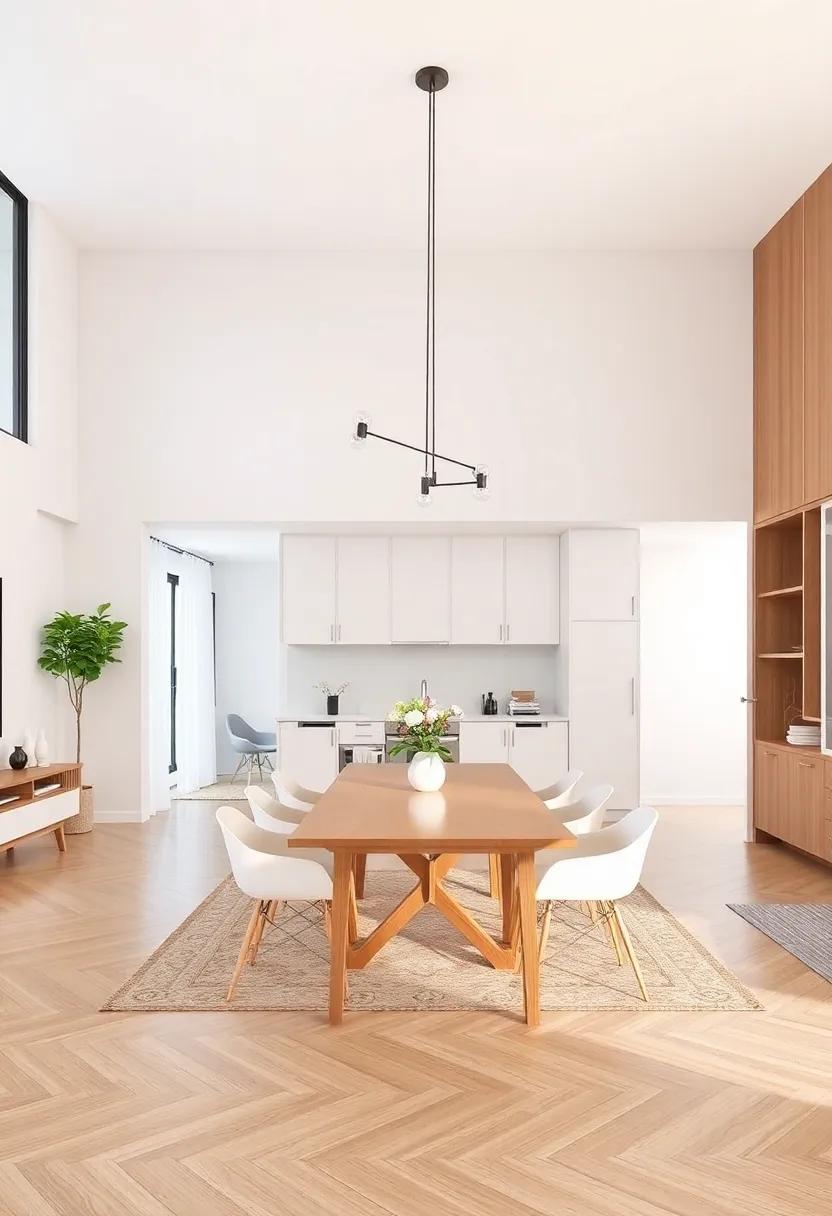
Embracing an open-concept living area frequently enough leads to the challenge of maintaining association amidst the desire for spaciousness. To achieve a seamless look, consider vertical storage solutions that leverage walls and unused spaces. Floating shelves offer an elegant way to display decor and books without consuming floor space.Additionally,multi-functional furniture,such as ottomans with hidden compartments or coffee tables with built-in storage,can effortlessly integrate style and practicality. This approach allows you to keep everyday essentials within reach while reducing visual clutter.
For those seeking to maximize functionality without sacrificing aesthetics, modular storage units provide a customizable option to suit changing needs. these systems can be reconfigured to adapt to different layouts or aesthetic preferences, ensuring your space evolves alongside your lifestyle. Incorporating baskets and bins in open shelving not only adds texture and warmth but also helps to corral smaller items, creating an organized appearance. A well-thought-out design layout can include defined zones, ensuring each aspect of your living area serves its purpose while still allowing for a free-flowing sense of openness.
Navigating Acoustic Challenges in Open Concept Layouts for Peaceful Living
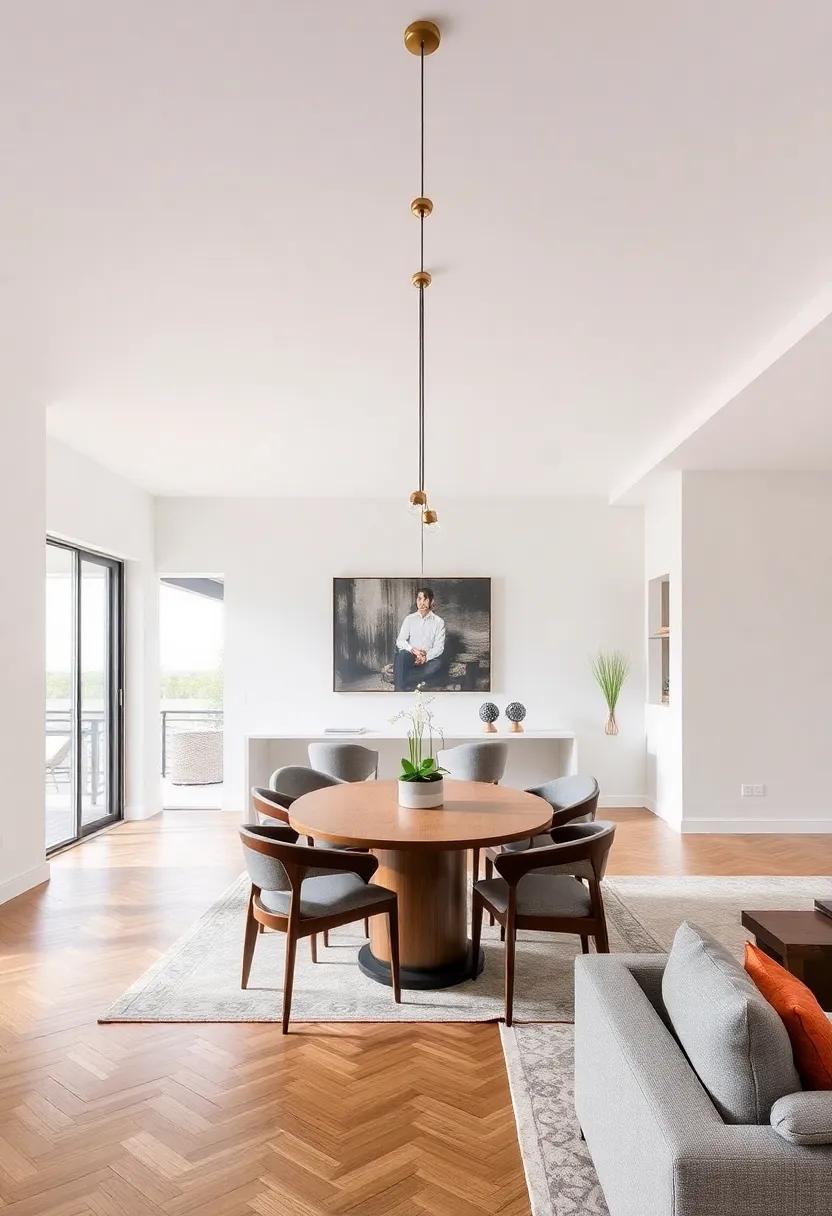
Open-concept designs seize the elegance of spaciousness, but they can inadvertently amplify noise, creating an environment that may feel chaotic rather than serene. the combination of shared spaces increases sound reverberation from conversation, appliances, and everyday activities.To cultivate a tranquil atmosphere, consider implementing acoustic solutions that blend seamlessly with your decor, such as:
- Soft furnishings: Incorporating plush rugs, cushions, and curtains can significantly absorb sound.
- Acoustic panels: Attractive wall-mounted panels can enhance aesthetics while diminishing noise levels.
- Furniture arrangement: Strategically positioning large furniture pieces like bookshelves can act as natural sound barriers.
Additionally, the use of technology can definitely help maintain a peaceful living environment without compromising style. Devices like noise-canceling speakers can deliver personalized sound experiences while minimizing disturbances. explore the options below for achieving an ideal sound environment:
| Acoustic Solution | Benefits |
|---|---|
| Soft furnishings | Enhances comfort and absorbs sound |
| Acoustic panels | Stylish decor that improves sound quality |
| Noise-canceling devices | Tailored sound experience without distractions |
Architectural Features that enhance the Open Experience and Aesthetic Appeal
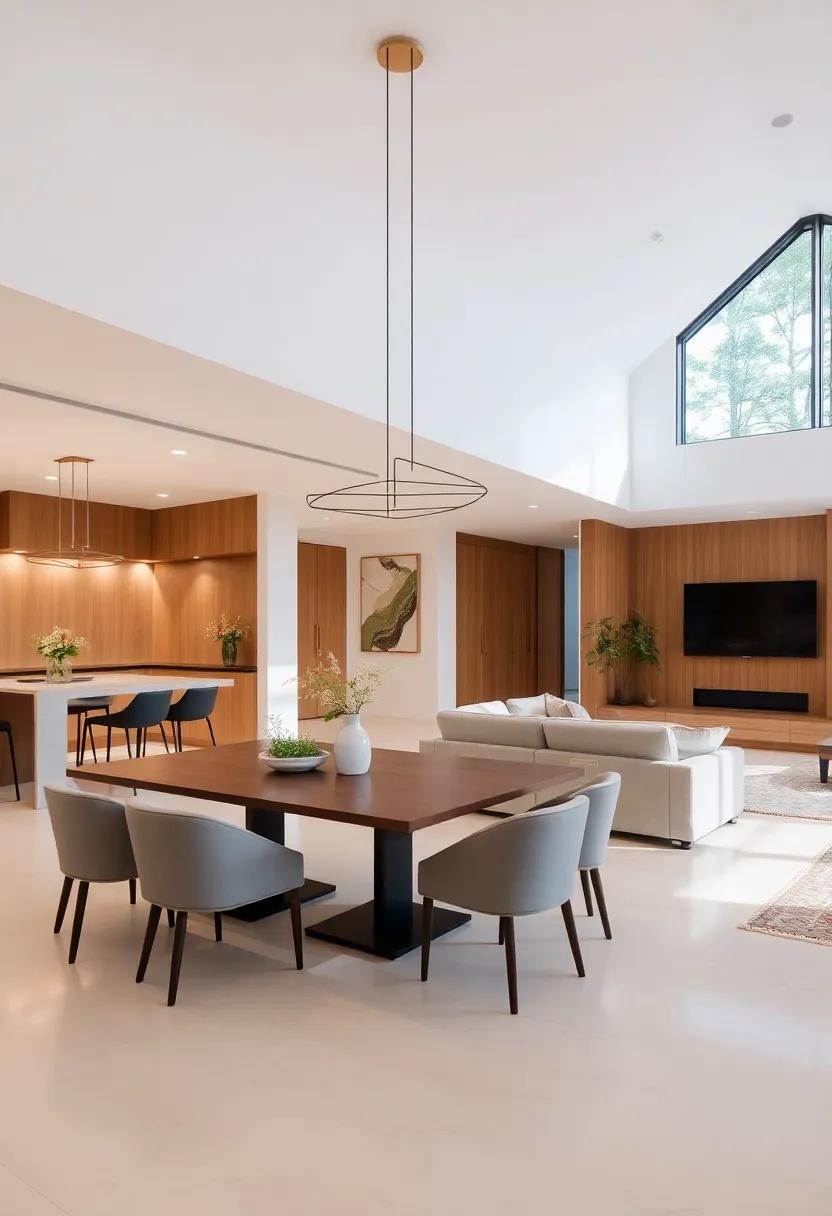
Open-concept designs captivate with their ability to blend spaces, allowing for a harmonious transition between the dining and living areas. This seamless integration is often enhanced by high ceilings that draw the eye upward and create an airy feeling, encouraging natural light to flood in. To emphasize this expansive atmosphere, large windows or sliding glass doors not only invite the outdoors in but also frame picturesque views. elements like minimalist furniture and neutral color palettes further contribute to a sense of openness, allowing the eye to travel effortlessly across the space.
Incorporating architectural features such as floating shelves or built-in cabinetry can add both functionality and artistry without overwhelming the aesthetic. These elements provide opportunities for personal expression while maintaining the uncluttered look that open spaces thrive on. defined areas,achieved through the use of area rugs or subtle lighting changes,can delineate different functions within the shared environment,giving each part its own character without sacrificing the overall fluidity. Furthermore,the strategic placement of accent walls can create focal points that enhance the design,inviting conversation and engagement without breaking the visual flow.
Exploring Cultural Influences on Open Concept Design Across the Globe

The intersection of culture and design manifests distinctly in open-concept layouts, showcasing unique interpretations around the globe.In North America, the shift towards spacious living areas reflects a cultural embrace of informality and connection, as families and friends gather without barriers. In contrast,Japanese design principles frequently enough integrate natural elements,emphasizing tranquility and harmony; rooms might be separated by sliding shoji screens,allowing for flexibility while maintaining aesthetic unity. This blend of functionality and cultural depth highlights the way different societies prioritize their interactions, leading to varying approaches in crafting seamless living spaces.
Across Europe, the allure of open-concept spaces draws on rich past narratives while infusing modern sensibilities. Scandinavian designs often emphasize minimalism, with clean lines and neutral palettes, promoting a sense of calm and simplicity that resonates with regional lifestyles. Meanwhile, Mediterranean homes favor vibrant colors and lively social interactions, featuring large dining areas that spill into outdoor terraces, reflecting a cultural recognition for communal living. This diversity underscores how regional heritage and lifestyle values create distinct forms of open-concept design, fostering environments that invite connection while celebrating individual authenticity.
Using Area Rugs to Define Spaces in a Cohesive Open Layout
In an open-concept design, area rugs serve as an artistic solution to delineate various areas, adding depth without the need for physical barriers. By choosing rugs that harmonize with both color palettes and textures, you can create distinctive zones within the same space. Consider selecting rugs in contrasting yet complementary hues for a more dynamic effect.Here are a few creative methods to utilize area rugs effectively:
- Visual anchors: Use a large area rug to anchor your seating arrangement, making it feel like a cohesive unit.
- Layering Textures: Incorporate different rug textures to enhance contrast and appeal, mixing materials such as jute and wool.
- color Coordination: Choose rugs in shades that echo the colors found in nearby furnishings or wall art to maintain harmony.
Strategically positioning smaller rugs in dining areas or reading nooks allows you to instill intimacy and warmth in an expansive environment. These rugs invite interest and encourage interaction, guiding the eye and grounding the space together. When selecting the right pieces,consider the shape and size; round rugs can soften edges,while rectangular options can delineate pathways or other areas. Examine the following table for quick tips:
| Rug Shape | Ideal Placement | effect |
|---|---|---|
| Round | Dining Tables | Encourages Conversation |
| Rectangular | Living Room | Defines Seating Area |
| Runner | Hallways | Guides Movement |
incorporating Technology Seamlessly in Open Living and Dining Environments
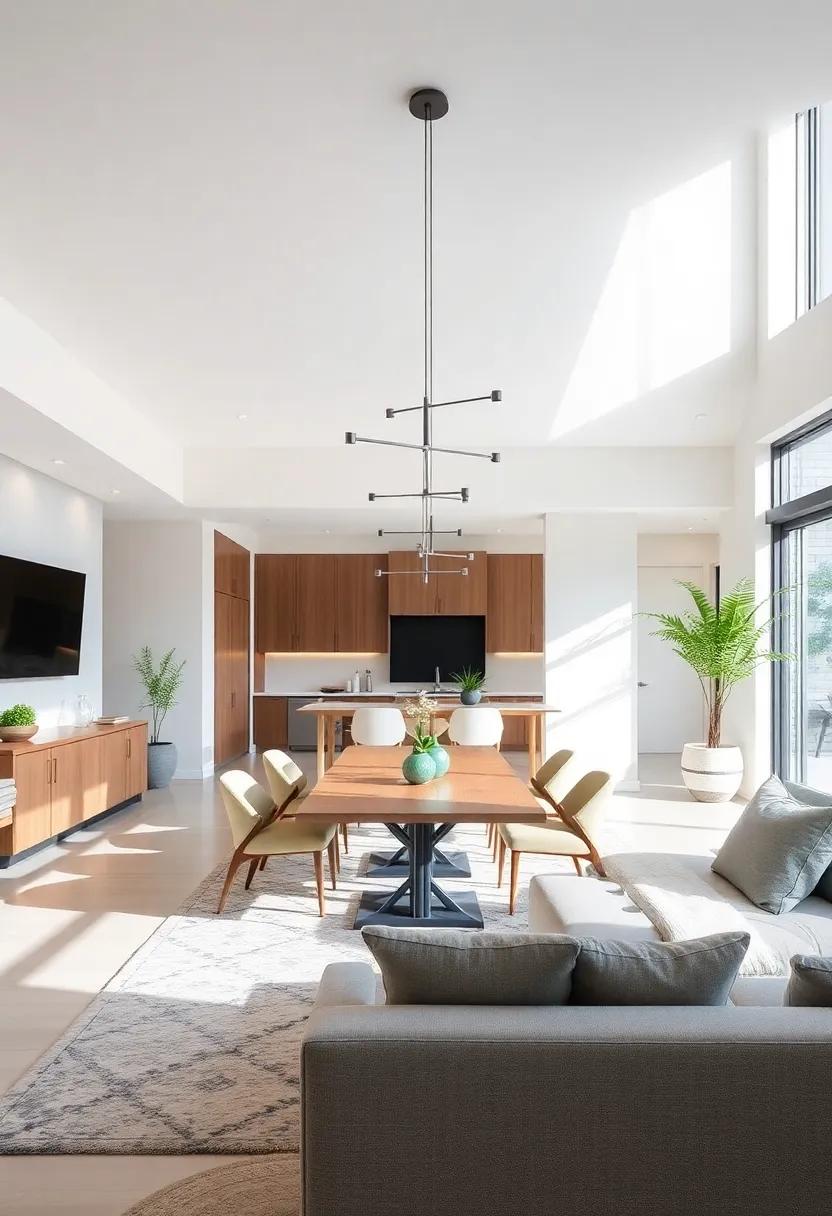
In open living and dining environments, technology can enhance connectivity while maintaining the aesthetic appeal of the space. by integrating smart home systems, homeowners can easily control lighting, music, and climate with just a touch or a voice command. Consider adding discreet built-in speakers that blend into the decor, allowing for immersive sound without the clutter of customary audio systems. Smart lighting solutions, such as LED strips or color-adjustable bulbs, provide both functionality and ambiance, effortlessly transitioning from bright, energizing light to warm, cozy tones as day turns to night.
Moreover, the choice of furniture can significantly impact the seamless integration of technology. Modular pieces that incorporate charging ports or wireless charging capabilities promote convenience without detracting from the design. A sleek coffee table can also double as a tech hub, outfitted with hidden compartments for devices and accessories. To illustrate this approach, the following table highlights key smart technology elements and their benefits:
| Technology | Functionality | Aesthetic Impact |
|---|---|---|
| Smart Speakers | Voice control for music and smart home devices | Can be used as decor pieces |
| Smart Lighting | Customizable brightness and color | Enhances mood and style of the space |
| Wireless Charging Tables | Convenient charging options | Minimizes visible clutter |
The Role of Focal Points in Unifying open spaces with Distinctive Design
In a well-designed open-concept space, focal points play a pivotal role in tying together various functional areas, creating a seamless flow that enhances the overall aesthetic. These design anchors can take various forms, drawing attention and serving as a visual bridge between living and dining areas.As a notable example, a stunning chandelier can act as a magical divider, illuminating the dining space while complementing the living room’s decor. Similarly, a striking piece of art or a beautifully crafted fireplace can create a sense of unity while allowing each area to maintain its unique character. By strategically placing these elements, homeowners can achieve a harmonious balance, ensuring that each zone feels interconnected yet distinct.
Focal points not only enhance visual appeal but also provide a framework for designing the surrounding space. Consider the following when selecting your focal points:
- Scale: Ensure that your focal point is proportionate to the surrounding elements.
- Color: Use colors that tie in with both areas, creating a cohesive palette.
- Texture: Incorporate different materials to add depth and interest.
Through thoughtful integration of these features, open spaces can transform into inviting environments that encourage interaction and relaxation. A well-placed focal point can elevate the atmosphere of a room, making it not just a living space, but a canvas of design that speaks to the personality of its occupants.
Sustainable Choices in Open-Concept Design for Eco-Conscious Living
Embracing eco-friendly materials is essential for enhancing the beauty and functionality of open-concept spaces. Using recycled, reclaimed, or sustainably sourced materials can lay a solid foundation for a stunning atmosphere. Consider integrating natural finishes that bring warmth and character, such as:
- Bamboo flooring – a fast-growing and renewable resource
- Reclaimed wood – each piece tells a unique story
- Low-VOC paints – to improve indoor air quality
Incorporating energy-efficient appliances within the open layout enhances its sustainability without compromising style or performance. When it comes to lighting, opt for LED fixtures that provide ample illumination while reducing energy consumption. Thoughtful placement of large windows can also maximize natural light,further minimizing reliance on artificial sources. Here’s a quick comparison of eco-friendly options:
| Feature | Traditional Lighting | Energy-Efficient Lighting |
|---|---|---|
| Energy Use | High | Low |
| Lifespan | Short | Long |
| Heat emission | high | Minimal |
Creating a family-friendly Atmosphere in Open Spaces without Sacrificing Style

Open spaces are a canvas for creativity, allowing families to express their unique style while ensuring a welcoming environment for all ages. To achieve a family-friendly atmosphere, consider using durable materials and color palettes that evoke warmth and comfort. Integrating multifunctional furniture—like stylish ottomans that double as storage or sleek coffee tables that can be transformed for playtime—ensures that the space remains both chic and practical.Additionally, design elements such as plush rugs can define areas for different activities, from dining to lounging, creating an inviting environment that encourages togetherness.
In terms of decor, accentuating with child-friendly artwork and decorative elements can seamlessly blend style and usability, keeping the aesthetics refined without compromising on family needs. Organizing seating arrangements to encourage conversation while still considering safety—such as opting for rounded furniture edges—plays an significant role in achieving a harmonious space. Here’s a quick guide to some essential features that enhance functionality while maintaining elegance:
| Feature | Style Tip |
|---|---|
| Durable Fabrics | Choose upholstery in stain-resistant textiles. |
| Flexible Layouts | Use modular furniture for easy rearrangement. |
| Color Schemes | Opt for neutral tones accented with bright colors. |
| natural Lighting | Incorporate large windows to enhance brightness. |
Using Color Psychology to influence Mood in open Living Designs
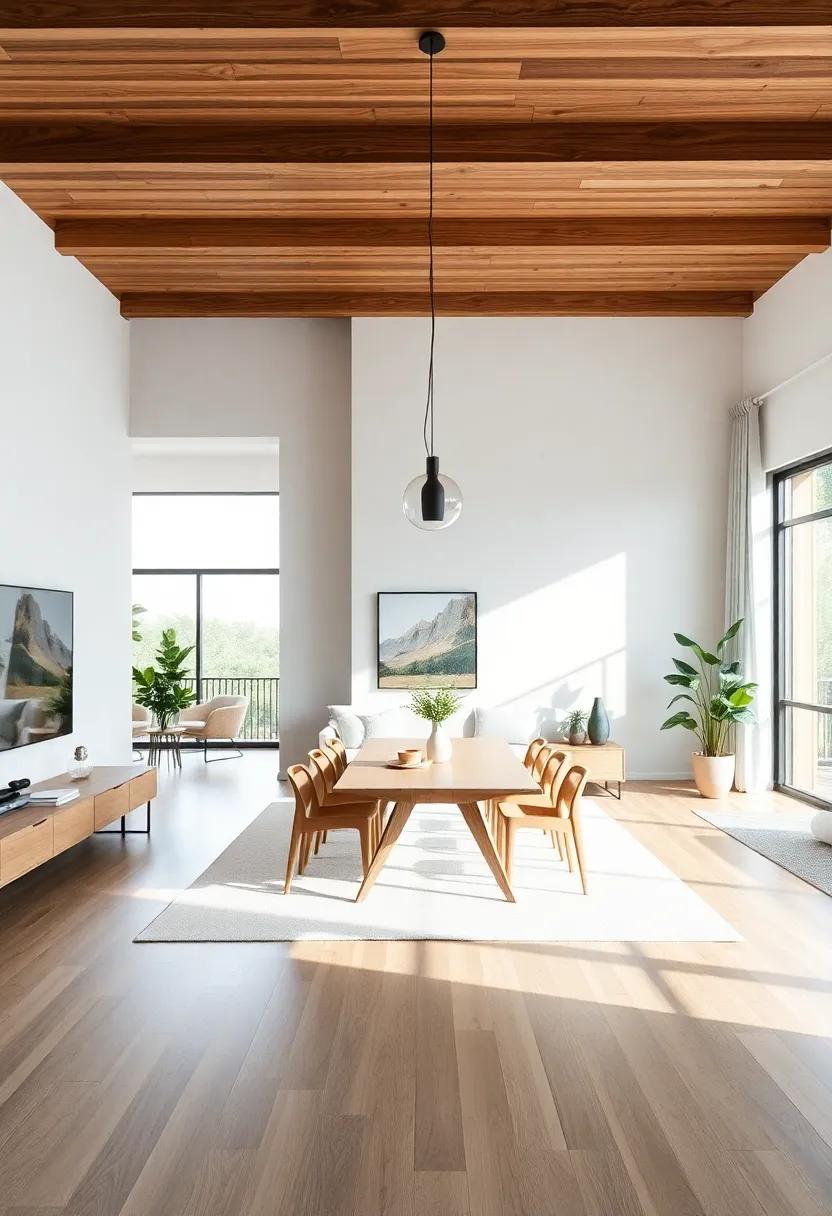
In the realm of open living designs, color plays a pivotal role in defining the atmosphere of the space. The choice of hues not only enhances the visual appeal but also actively influences the emotions and behaviors of those who inhabit the space. As a notable example, warmer shades like soft reds and earthy oranges can foster feelings of warmth and comfort, making them ideal for dining areas. In contrast, cooler tones such as tranquil blues and soothing greens are known for their calming effects, often used in living spaces to promote relaxation and peace. This intentional use of color helps create a seamless transition between the dining and living areas, encouraging a harmonious interaction among family and friends.
To harness the power of color effectively in open-concept designs, consider the following elements:
- Accent Colors: Use bold colors in accents, such as cushions or artwork, to create focal points without overwhelming the senses.
- neutral Base: Opt for a neutral palette as a foundation, allowing vibrant accents to stand out while maintaining a balanced atmosphere.
- Natural Light: factor in lighting; natural light can change how colors appear throughout the day, affecting mood and perception.
The Conclusion
As we step back from the vibrant canvas of open-concept dining and living room designs, we are reminded that these seamless spaces tell a story of connection and flow. They invite us to share meals, laughter, and moments of togetherness, all within a harmonious setting that blurs the lines between functional areas. The allure of these designs lies not just in their aesthetic appeal, but in their ability to foster a sense of unity, where every corner feels inviting and every gathering feels intimate.
In embracing the open-concept layout, we open doors—not just to our homes, but to new ways of living and interacting. Whether you find inspiration in a minimalist approach or lean towards eclectic bursts of color, the essence of these spaces lies in their adaptability to personal taste and lifestyle.
As our exploration comes to a close, let us consider how our homes reflect our values and aspirations. The allure of seamless spaces is an invitation to create environments that nurture our relationships and enhance our everyday experiences. So, whether you’re planning a renovation or simply dreaming of the possibilities, remember that at the heart of it all lies the desire for connection—a timeless feature that will always remain in style.

